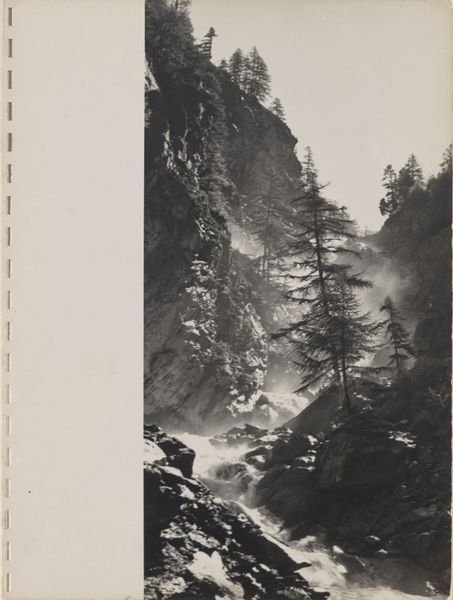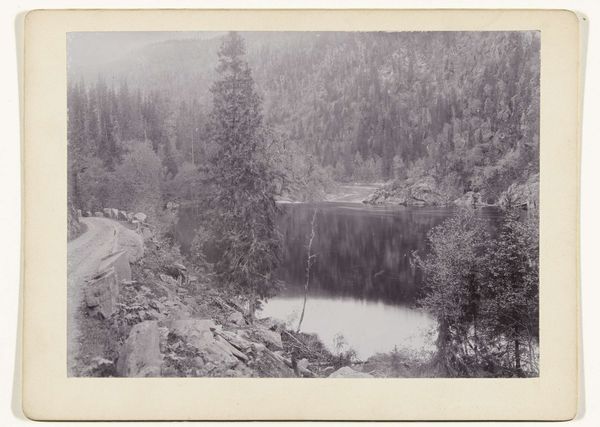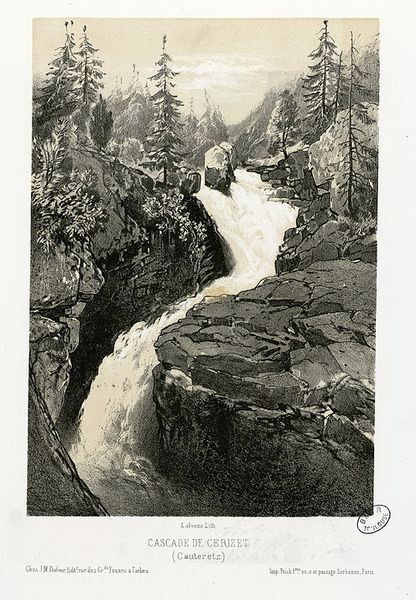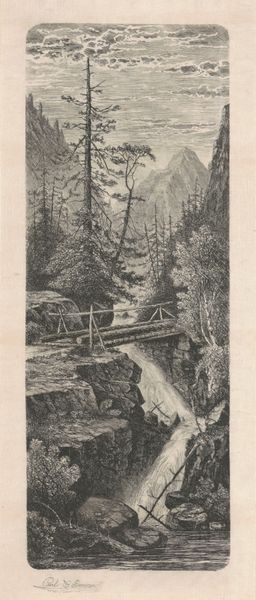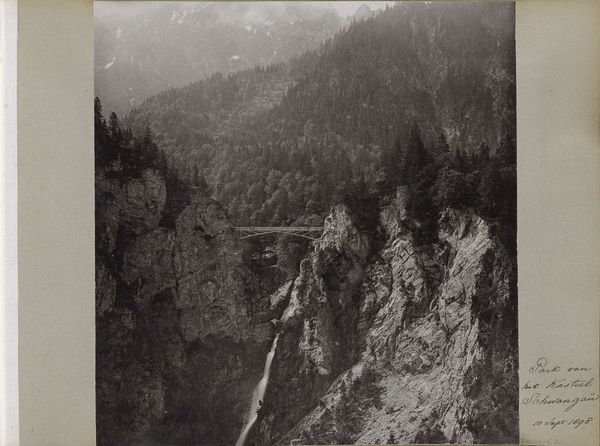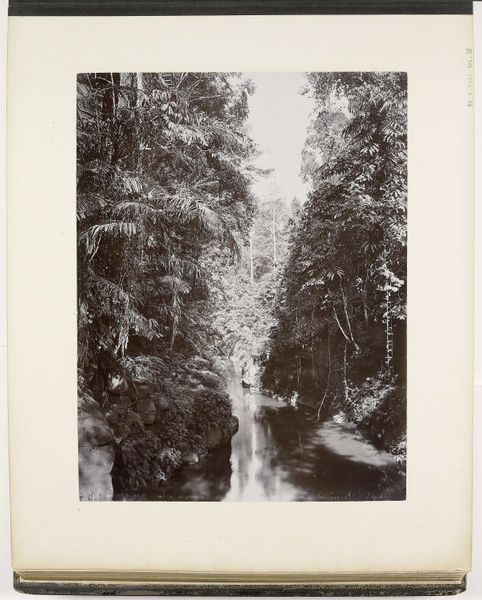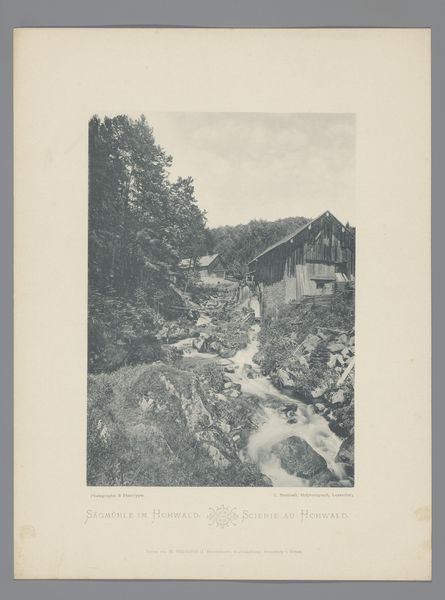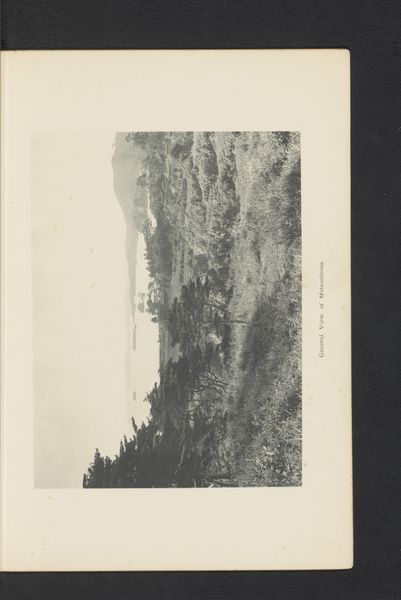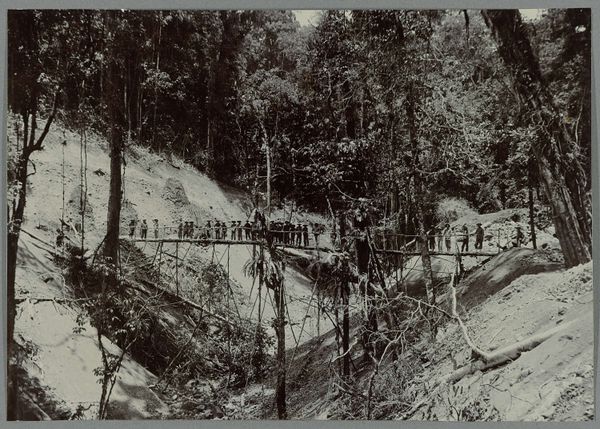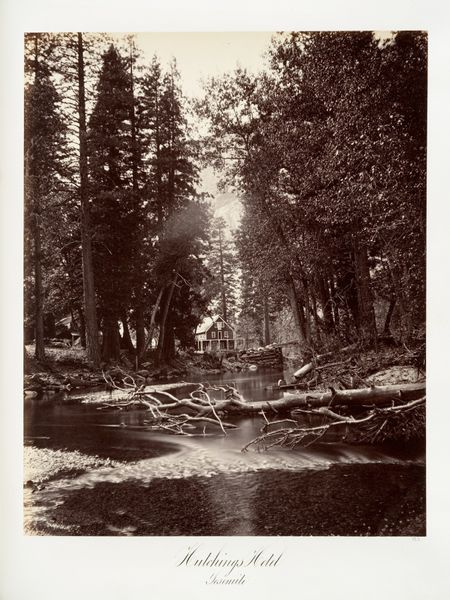
Dimensions: height 121 mm, width 87 mm
Copyright: Rijks Museum: Open Domain
Editor: This artwork, titled "Kerstgroet / Gezicht in Emogen (?) Creek, Colorado, Verenigde Staten," is a cyanotype photograph from 1910. It’s entirely blue and shows a landscape with mountains and a stream. What catches your eye about it? Curator: Well, immediately the process itself—cyanotype—grabs my attention. It's a very specific, almost alchemical process. We have to think about the labor involved in producing this image. How does the materiality of the cyanotype process—the controlled chemical reaction, the exposure to light—influence how we understand this landscape? Editor: So, more than the landscape itself, you are thinking about how it was made and the material of the photo? Curator: Precisely. The uniform blue flattens the image in a way that challenges traditional landscape painting. How does it disrupt the Hudson River School’s goal of depicting manifest destiny through the depiction of nature? How might its photographic method challenge traditional academic landscape artmaking in the United States at the time? Is this intended for scientific use, tourism, or something else entirely? Editor: I hadn’t thought about it that way. It makes me think about photography in the 1900s and its relationship to industrial progress. It's about mass production of images and a changing culture. Curator: Exactly. The materials and the method become a commentary on art’s purpose itself. Was it a conscious effort? Intended or accidental, that shift of purpose happened, whether the photographer sought it or not. It also asks: who was making these images, for what use, and at what cost? The chemicals involved had an industrial manufacturing and environmental impact we would consider deeply, today. Editor: It gives the photograph an unexpectedly critical, yet muted voice. It almost looks like an industrial blueprint of nature rather than an artistic celebration. I'll have to consider labor and context more closely going forward! Curator: Considering the artist and audience when assessing work such as this creates richer possibilities. It is important to remember that art objects are created within very specific contexts that always leave their trace.
Comments
No comments
Be the first to comment and join the conversation on the ultimate creative platform.

